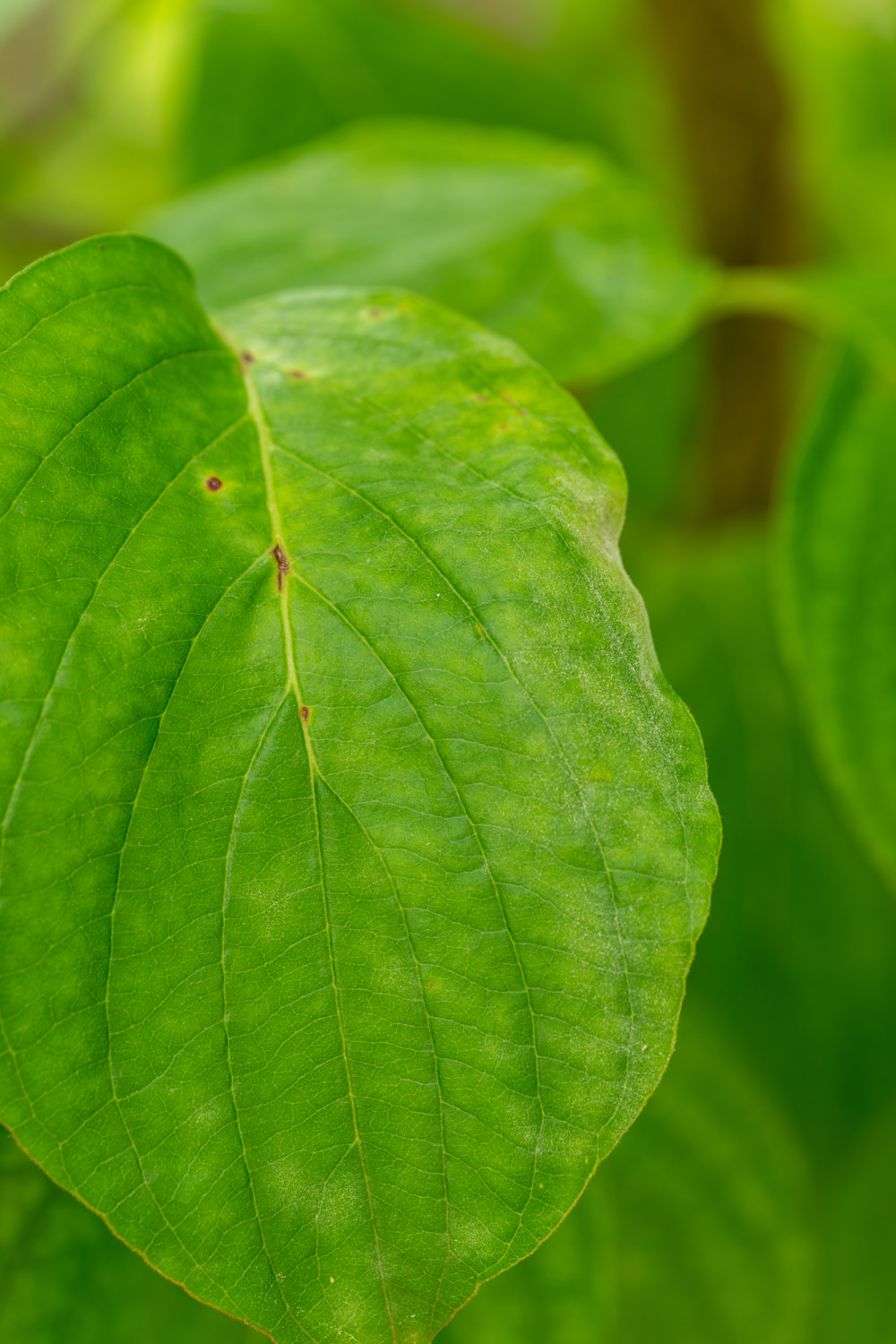
See all posts by this author
Dogwood powdery mildew, caused by the fungus Erysiphe pulchra, is characterized by a white, powdery substance on the surface of leaves. As the infection progresses, leaves can become distorted, and premature leaf drop may occur.
Of course, prevention and treatment for dogwood powdery mildew is included in a Plant Health Care subscription from Arborscapes. (As are myriad other pests and diseases) If you would like to become a part of our Plant Health Care program, reach out to Arborscapes today! Your living landscape will be the envy of the entire neighborhood!
Here’s how you can manage and treat powdery mildew on dogwoods in Charlotte:
Cultural and Physical Controls:
- Proper Spacing: Ensure trees are spaced adequately to promote good air circulation, reducing the conditions favorable to fungal growth.
- Pruning: Thin out dense canopies to improve airflow. Remove and dispose of any visibly infected leaves or branches.
- Watering: Avoid overhead watering. If you need to water, do so early in the day or use soaker hoses to keep foliage dry.
- Resistant Varieties: If you’re considering planting new dogwoods or replacing affected ones, look for varieties resistant to powdery mildew.
Chemical Control:
- Fungicides: Several fungicides can be effective against powdery mildew. Options include sulfur, neem oil, potassium bicarbonate, and more synthetic choices like myclobutanil or propiconazole. Begin applications when you first notice the mildew or when conditions are conducive to its development (warm, dry days followed by cool, humid nights).
- Horticultural Oils: These can also be effective, especially when applied early in the disease’s development. Neem oil is an example that has fungicidal properties.
Stress Reduction:
- Trees that are stressed are more susceptible to diseases. Ensure your dogwood trees are well-watered during dry periods and consider a balanced fertilizer if the tree appears nutrient-deficient.
Regular Monitoring:
- Regularly inspect your dogwoods, especially during periods conducive to powdery mildew development. Early detection and treatment can make management more effective.
Remember always to read and adhere to label instructions when applying fungicides. Also, consider the potential impacts on beneficial insects, pollinators, and the surrounding environment. Combining preventive measures with timely interventions will provide the best protection against powdery mildew on dogwoods.
And if all of this sounds like too much work, contact Arborscapes to subscribe to our Plant Health Care program, and we will take care of this, other pests, fertilization and health concerns for your living landscape!
See all posts by this author
